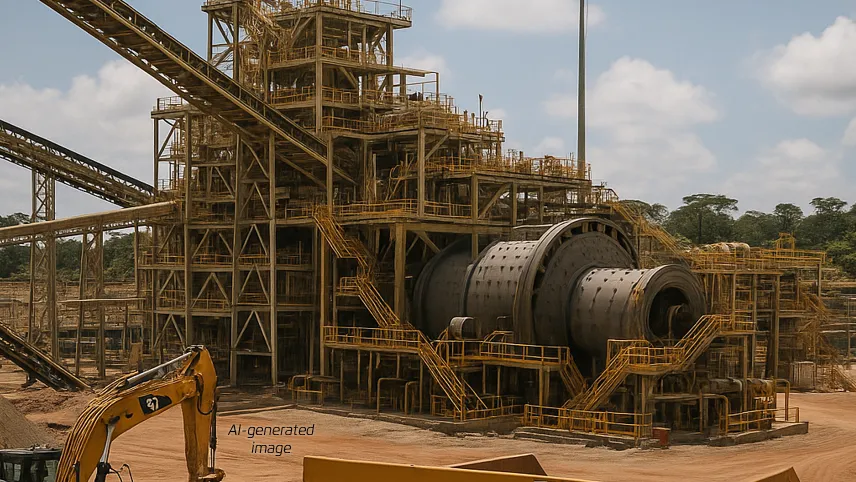Asante Gold Completes Sulphide Plant at Bibiani Mine, Ghana

Asante Gold commissions its new sulphide plant at Bibiani Mine, boosting recovery to 92% and positioning Ghana as a West African gold hub.
Asante Gold Corporation has achieved a major operational breakthrough with the completion and commissioning of its new sulphide processing plant at the Bibiani Gold Mine in Ghana. This marks a critical milestone in the company’s broader growth and modernization strategy, as it transitions Bibiani into a high-efficiency, large-scale gold producer. The newly built facility, now fully operational, will dramatically increase both gold recovery rates and overall production capacity, positioning Asante among the leading mid-tier gold producers in West Africa.
The construction and commissioning of the plant were successfully completed with initial financial backing that included a US$100 million deposit from Fujairah Holdings, part of a US$500 million gold forward sale agreement. This financing structure reflects investor confidence in Bibiani’s long-term production potential and Asante’s execution capabilities. The new plant has commenced operations under 12-hour production shifts, with full 24/7 continuous operation scheduled from 30 September. Once the ramp-up phase is complete, Asante expects a substantial improvement in process efficiency, with gold recovery rates projected to rise from 60% to as high as 92% by the end of October, a transformative leap in metallurgical performance.
The Bibiani sulphide processing plant boasts a nameplate capacity of 4 million tonnes per annum, providing the infrastructure base for a scalable production model. Combined with the company’s nearby Chirano Gold Mine, Asante is targeting annual production in the range of 450,000–500,000 ounces of gold. This output will firmly establish the company as one of Ghana’s most prominent gold producers, contributing significantly to national export revenues and job creation in the Western North region. The company’s current market capitalization of C$1.75 billion (approximately US$1.26 billion) underscores strong investor support and growing market recognition of its operational achievements.
With the plant now moving into its ramp-up and optimization phase, Asante Gold will focus on fine-tuning plant performance, enhancing ore blending strategies, and streamlining process controls to maximize recovery and throughput. These improvements are expected to lower unit costs, extend mine life, and improve overall project economics. Furthermore, the new sulphide circuit allows Asante to process a broader range of ore types, including refractory and sulphide-bearing material that was previously uneconomic, unlocking substantial additional resource potential within the Bibiani mine complex.
The successful completion of this project marks a significant step not only for Asante Gold but also for Ghana’s mining industry, which continues to solidify its status as a global gold hub. The Bibiani plant’s operational readiness demonstrates the impact of sustained investment, technical innovation, and strong local partnerships. Asante’s commitment to responsible mining and infrastructure development is poised to deliver lasting benefits, stimulating local economies, enhancing employment, and reinforcing West Africa’s strategic role in the global gold supply chain.
Mini-Glossary
- Sulphide Processing Plant: A facility designed to process sulphide ores (containing sulphur compounds) to extract metals such as gold, typically using flotation and oxidation techniques.
- Commissioning: The process of testing and verifying all components of a new plant to ensure it operates safely and efficiently before full production begins.
- Gold Forward Sale: A financing arrangement in which future gold production is pre-sold at an agreed price to secure upfront capital.
- Nameplate Capacity: The designed maximum production capacity of a processing plant under ideal operating conditions.
- Gold Recovery Rate: The percentage of gold successfully extracted from ore compared to the total amount contained in that ore.
- Ramp-Up Phase: The period following commissioning when production gradually increases to reach full operational capacity.
- Refractory Ore: A type of ore that is difficult to treat using conventional extraction methods due to the presence of minerals that trap gold within sulphide matrices.
